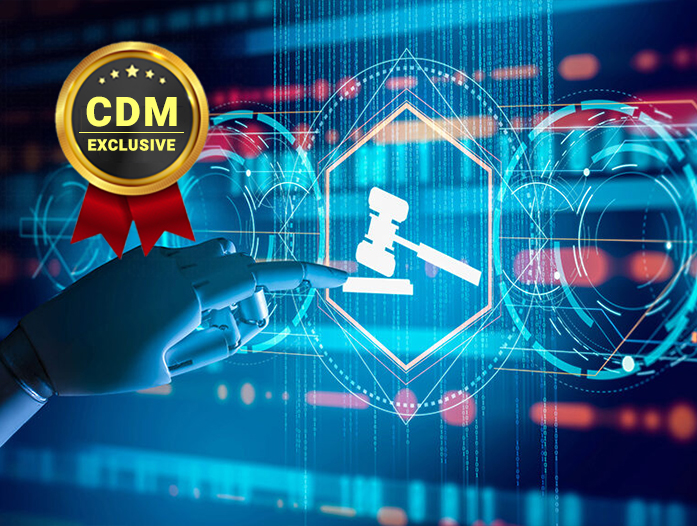By AJ Sarkar, Founder and CEO of OptimEyes.ai
A company’s C-suite and directors assess cyber threats based on the potential impact on high-level business objectives. How will a particular attack impact year-over-year growth? Client experience and trust? Company reputation? An anticipated expansion or product launch?
The information security operations team, on the other hand, needs technical details to execute an effective tactical defense, hold the hackers at bay, and minimize damage.
In the middle, CISOs assess vulnerabilities within network segmentation, architecture, governance, operations and processes. They watch for threats and work with their counterparts throughout the business to stop impacts from rippling across the organization. This requires effective, efficient communication across the enterprise – with info-sec ops, business unit leaders, and the CEO, CFO, CIO, CCO, and CRO, among others.
Until recently, there has been no common language for managing risk across the organization, let alone up to the board. Limitations in the effectiveness of risk monitoring, quantification and benchmarking have only exacerbated the problem.
Flying Blind
Despite advances in technology, most organizations lack continual, real-time monitoring of cybersecurity vulnerabilities or a comprehensive picture of risk across the enterprise. Data needed to assess risk impact often is collected at a single point in time, assessed manually in spreadsheets, and analyzed in isolated functional silos. This leaves companies flying blind, lacking a big-picture risk assessment, and likely to miss emerging issues until they escalate into crises. This traditional approach to managing risk leaves companies exposed when trying to understand and deal with the ferocity of today’s threats and challenges.
Reporting to executive teams routinely occurs quarterly, biannually, or annually and lacks a timely, holistic view of overall enterprise risk, so leaders struggle with risk prioritization and proactive, strategic planning.
Consider this: only 30% of organizations surveyed for PWC’s new 2022 Global Digital Trust Insights Report quantify their cybersecurity risk.
As a result, in most companies the C-suite lacks the timely information and context they need to make sound, informed decisions. How big is the threat? How does it compare with other threats on the horizon? What is the potential impact on the company’s key objectives? Without adequate risk-assessment data to analyze situations, prioritize responses, set policies and allocate resources, many simply rely on intuition, best guesses or a stab in the dark.
At the same time, many CISOs also lack a view of the big picture – and, therefore, the ability to confidently advise the C-suite or direct the info-sec ops team to aggressively target and mitigate the greatest threats.
Timely and comprehensive data, robust analytics, and intuitive data visualization are needed in tandem to tell the complete story and ensure each group within the hierarchy – leadership, management, and ops – understands the situation and can fulfill their roles and responsibilities and support each other.
A Universal Translator
To create a common risk language for cross-organizational communication, it is the ability to garner and analyze data that provides meaning. Comprehensive operational data, information on strategic objectives and risk tolerances, and real-time monitoring results of cyber risks enables enterprises to quantify, benchmark, and predict the magnitude and financial implications of threats and vulnerabilities.
In this scenario, a new, powerful methodology — Integrated, Digital Risk Modeling or IDRM — serves as the universal translator. It enables enterprises to collect and analyze mass amounts of underlying data, translates it into business intelligence, and presents it in an intuitive visual format – specific to that stakeholder within the organization. This gives all stakeholders a common narrative, contextual understanding, and the ability to drill into the information they need to achieve their goals, as well as the ability to communicate more effectively with each other.
This approach is based on the foundations of IDRM and include the following:
- Inside-Out Modeling: Enterprises use their unique operational data to continuously monitor risk exposure. This generates instantly actionable organization-specific insights that can’t be achieved by the more common practice of relying on general industry information.
- Financial Impact Quantification: Companies calculate the annual loss expectancy of specific risks in order to understand real-time financial exposure. With this intel they can see threats and vulnerabilities in a financial context, weigh and compare their potential impact, and inform priority setting and resource investment and allocation.
- Targeted Industry Benchmarking: Enterprises compare their risk exposure to industry peers — after data is adjusted to take account of industry type, company size, risk appetite, data assets, and other factors.
- Multiple Use Cases by Design: The ability to automate any risk framework or enterprise use case and integrate enterprise-wide risk modeling eliminates siloed reporting and enhances executive and board level decision making. The design flexibility helps organizations respond nimbly to the latest emerging threat or headache.
- Neuroscience-Based Dashboards: Present comprehensive, enterprise-wide reports in clear, unbiased formats that lead to more consistent, confident decisions and risk mitigation at each management level.
- Risk Scenario Planning: Artificial intelligence (AI) and machine learning (ML) deliver a reliable, predictive process that enables enterprises to assess best- and worst-case scenarios, compare threats, and determine where to invest in risk mitigation. The platform continues to learn as it’s exposed to more enterprise data, which finetune outputs and insights.
- Rapid, Customized Deployment: IDRM can customize the data captured across use cases to deliver a comprehensive, bespoke view of each organization’s unique risk landscape — and the platform can be operational within two to three weeks to generate fast ROI.
The AI /ML-driven IDRM methodology gives organizations a complete, actionable view of the risks they face — and gives the C-suite, the CISO, and the information security operations teams the ability to communicate effectively, in real time to make critical risk-based decisions.
About the Author
 AJ is the CEO of OptimEyes.ai, an AI-powered SaaS solution for enterprise security, compliance, and privacy risk management. Unlike others, OptimEyes monitors risk real-time, on a continuous basis and provide a trackable risk score, providing a single integrated dashboard to easily understand total risk. AJ is also an Official member of the Forbes Technology Council, and the Founder and Chairman of ICCG, a 501c (6) non-profit, established to improve local competitiveness in a global economy. AJ is a serial Entrepreneur who successfully founded and sold a BPM (Business Process Management) software company, and also successfully established an IT consulting company. AJ has his MS in Computer Science from the University of Pune, India, and resides in San Diego, CA. Our company website https://optimeyes.ai Follow us LinkedIn and Twitter.
AJ is the CEO of OptimEyes.ai, an AI-powered SaaS solution for enterprise security, compliance, and privacy risk management. Unlike others, OptimEyes monitors risk real-time, on a continuous basis and provide a trackable risk score, providing a single integrated dashboard to easily understand total risk. AJ is also an Official member of the Forbes Technology Council, and the Founder and Chairman of ICCG, a 501c (6) non-profit, established to improve local competitiveness in a global economy. AJ is a serial Entrepreneur who successfully founded and sold a BPM (Business Process Management) software company, and also successfully established an IT consulting company. AJ has his MS in Computer Science from the University of Pune, India, and resides in San Diego, CA. Our company website https://optimeyes.ai Follow us LinkedIn and Twitter.

